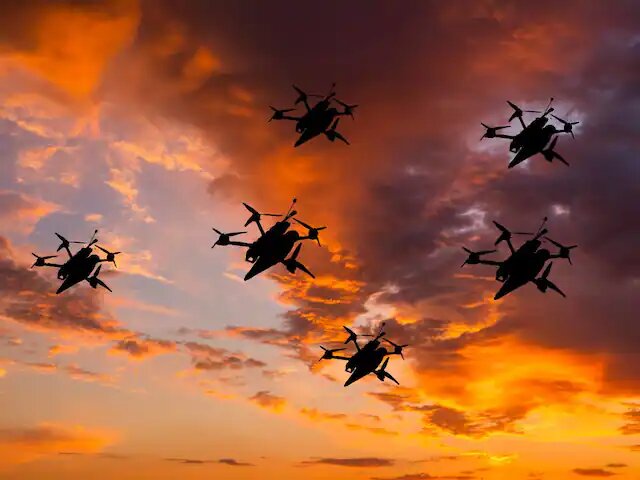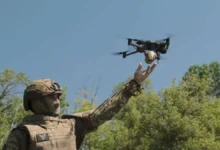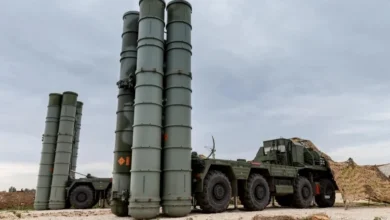Indian Army to Enhance Its Anti-Drone Arsenal In Response To Increasing Threats Posed By Unmanned Aerial Systems
Indian Army Strengthens Anti-Drone Defenses Amid Rising Unmanned Aerial Threats

- The Indian military is committed to integrating both soft and hard kill solutions, specifically in regard to air defence.
- A crucial aspect of this effort is the incorporation of hybrid systems and a Common Air Defence Tracked Platform (CADET).
The Indian Army is ramping up its defense against the growing threat of Unmanned Aerial Systems (UAS) by implementing a variety of new countermeasures. In addition to utilizing multiple radars, Integrated Drone Detection Systems, and advanced weaponry, the military is now in pursuit of state-of-the-art Anti-UAS High Power Microwave (AUHPM) systems to further fortify its defenses.
According to the recent Request For Information (RFI) from the Indian Army, there are plans for enhancements in their counter-UAS approach. The RFI includes a request for the purchase of the Anti-UAS High Power Microwave (Mk II) System, which will bring about improved surveillance, detection, and tracking capabilities. This system is equipped with a microprocessor for accurate targeting and a High Power Microwave weapon that can carry out “hard kill” (destruction) or “soft kill” (disruption) actions.
The document outlines the military’s desire for systems with a minimum of 50 per cent indigenous content, in line with the goal of achieving self-reliance in defence technology.
Recent events have emphasized the significance of UAS in modern warfare, such as Iran’s drone attack on Israel in April 2024, which saw over 170 drones deployed – one of the largest such attacks in history.
Israel’s successful response to this attack was noteworthy. Similarly, UAVs and drones have played a significant role in the ongoing conflict between Ukraine and Russia.
As India faces security threats from its neighbouring countries that are advancing their drone technologies, it is crucial to prioritize national security.
China possesses significant counter-UAS capabilities, while Pakistan is increasing its drone production and implementing countermeasures. Both nations have partnered to develop various UAVs, with China providing assistance to Pakistan.
According to experts, larger UAS systems like MQ-9 and Bayraktar TB2 are more easily detected and targeted, but smaller drones pose a challenge due to their size. To address this, soft kill options such as jamming and spoofing have been used, as well as hard kill methods like destruction. However, each strategy has its own obstacles; jamming can cause disruptions in other operations, while spoofing is difficult due to strong encryptions. Hard kill solutions require precision, range, and advanced systems.
A senior defence official emphasized the effectiveness of using a combination of both soft and hard kill strategies against these threats. Countries like Russia and Ukraine have successfully employed this approach in their ongoing conflict by utilizing systems such as Krashuka, Leer-3, Repellent-1, Pole 21 for jamming and spoofing purposes, while net guns, high-energy lasers and HPM devices are used for destruction.
India currently has counter-UAS systems in place, but they are constantly being upgraded and modified to keep up with the advanced capabilities of modern drones. “While we have measures in place, we are also seeking upgrades such as smart ammunition for our guns, like pre-fragmented rounds. Our Integrated Drone Detection System (IDDS) and Drone Kill System (DKS) are already operational, but it is important for us to stay ahead of emerging threats,” the official explained.
The Indian military is committed to integrating both soft and hard kill solutions, specifically in regard to air defence. This responsibility falls on both the Indian Army and Air Force, whose cooperation in implementing advanced technologies will greatly enhance their ability to defend against aerial threats.
A crucial aspect of this effort is the incorporation of hybrid systems and a Common Air Defence Tracked Platform (CADET). Our goal is to acquire HPM systems with a minimum range of 5 km that can effectively function in diverse terrains such as high altitudes (up to 4,500 metres), plains, deserts, and coastal areas.
While we have allowed for some flexibility in terms of design and operation, our ultimate requirement remains clear – we expect nothing but the highest quality systems available.







Facebook Comments